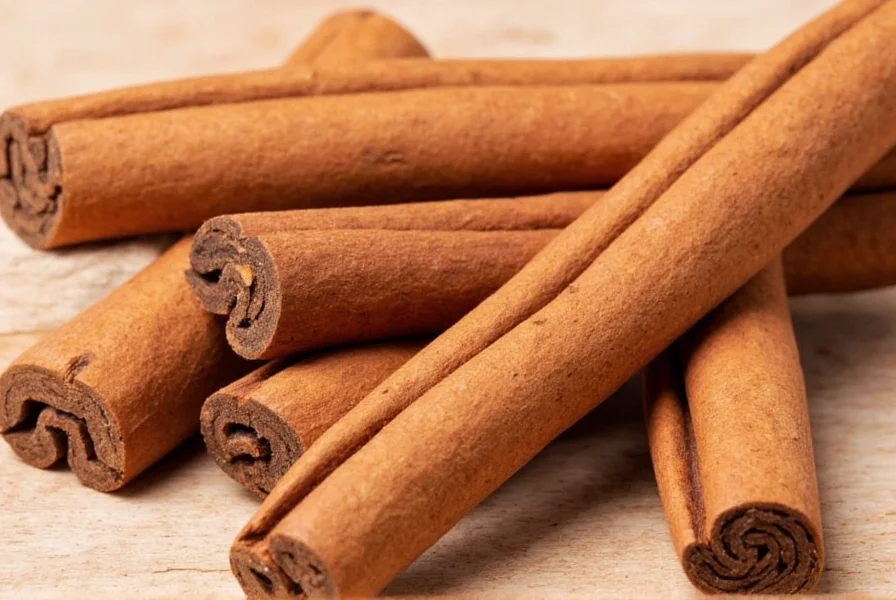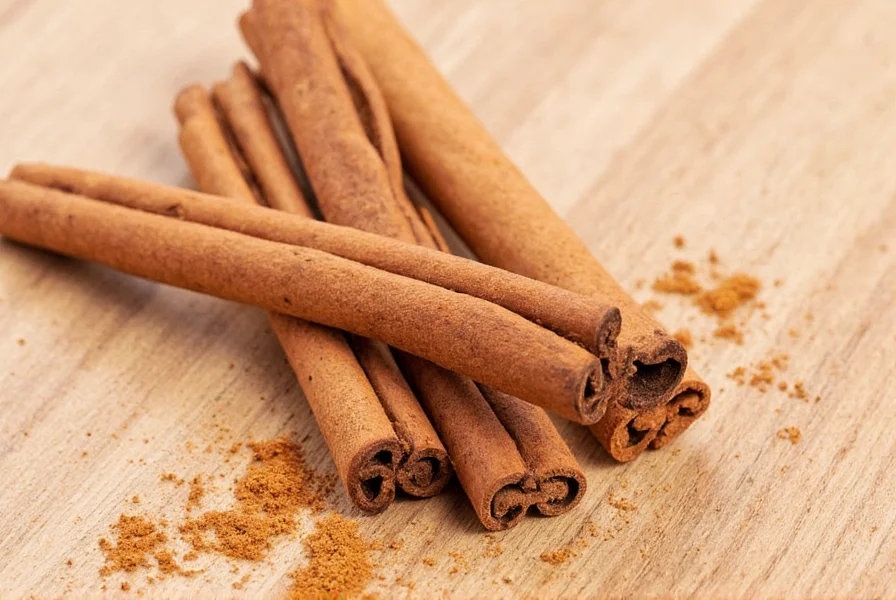Cinnamon's story begins over 4,000 years ago in the tropical forests of South Asia. This beloved spice wasn't just a kitchen staple but a treasure traded across ancient civilizations. The distinctive sweet, warm flavor we enjoy today comes from specific tree species that grow only in particular climate zones, creating a fascinating botanical and historical journey.
The Botanical Roots of Cinnamon
Cinnamon isn't a single uniform spice but comes from several related tree species. The two primary varieties with distinctly different origins are:
- Ceylon cinnamon (Cinnamomum verum or Cinnamomum zeylanicum) - Native to Sri Lanka (formerly Ceylon) and parts of southern India
- Cassia cinnamon (Cinnamomum cassia) - Originating in southern China, with additional varieties from Indonesia and Vietnam
These evergreen trees thrive in tropical climates with high humidity and consistent rainfall. The prized spice comes from harvesting the inner bark, which is carefully peeled, dried, and curls into the familiar quills or ground into powder.
| Cinnamon Type | Primary Origin | Distinctive Characteristics | Global Production Share |
|---|---|---|---|
| Ceylon Cinnamon | Sri Lanka, Southern India | Lighter color, delicate flavor, multiple thin layers | 10-15% |
| Cassia Cinnamon | Southern China, Indonesia, Vietnam | Dark reddish-brown, stronger flavor, single thick layer | 85-90% |
| Saigon Cinnamon | Vietnam | Highest oil content, strongest flavor | Small specialty market |
| Malabar Cinnamon | India | Intermediate between Ceylon and Cassia | Niche production |
Ancient Trade Routes and Historical Significance
The historical origins of cinnamon trace back to ancient Sri Lanka, where wild cinnamon trees grew abundantly. For centuries, Sri Lankan traders controlled the cinnamon trade, deliberately obscuring its source to maintain monopoly power. Ancient Egyptians used cinnamon as early as 2000 BCE for embalming and religious rituals, while Roman historian Pliny the Elder documented cinnamon's extraordinary value—equal to fifteen times the cost of silver by weight.
Arab traders dominated the cinnamon trade route for millennia, spinning elaborate tales about giant birds collecting cinnamon sticks to build nests in inaccessible mountains. This misinformation protected their lucrative trade secret until Portuguese explorers reached Sri Lanka in 1536 and established direct control over cinnamon production.

How Cinnamon Spread Across the Globe
The Dutch eventually displaced the Portuguese in the 17th century, implementing strict cultivation controls that limited cinnamon production to specific areas of Sri Lanka. When the British took control in 1796, they expanded cultivation to other colonies including India, Java, and the Caribbean.
This expansion explains why today's cinnamon production spans multiple continents while maintaining distinct regional varieties. Indonesia now produces about 40% of the world's cinnamon, followed by China (30%), Vietnam (17%), and Sri Lanka (10%). The unique terroir of each region creates subtle flavor variations that connoisseurs can distinguish.
Modern Production and Quality Differences
Understanding where does true cinnamon come from reveals important quality distinctions. Ceylon cinnamon, often called "true cinnamon," contains significantly lower levels of coumarin—a compound that can be harmful in large quantities—making it the preferred choice for regular consumption. Cassia cinnamon's stronger flavor makes it popular for baking, while Ceylon's delicate profile shines in desserts and beverages.
The harvesting process remains remarkably traditional. Skilled workers make precise vertical cuts in the bark during the rainy season when the sap flow is highest, then carefully peel the inner bark that curls as it dries. This labor-intensive process hasn't changed substantially in centuries, preserving the quality that makes cinnamon so special.

Cultural Significance Across Civilizations
Cinnamon's journey from obscure tropical bark to global kitchen essential reflects its remarkable cultural adaptability. In traditional Ayurvedic medicine, cinnamon has been used for digestive issues for over 3,000 years. Chinese medicine incorporated cassia cinnamon (called rougui) into formulas for circulation and warmth. European apothecaries prescribed cinnamon for everything from headaches to snake bites during the Middle Ages.
Today, cinnamon remains deeply embedded in cultural traditions worldwide—from Mexican hot chocolate to Moroccan tagines, Swedish cinnamon buns to Indian chai. This universal appeal stems from its unique ability to enhance both sweet and savory dishes while providing subtle health benefits.
Identifying Authentic Cinnamon Products
When exploring where does cinnamon originate from, consumers should know how to identify authentic products. True Ceylon cinnamon appears as multiple thin, fragile layers forming a delicate quill, while cassia forms a single thick, hard roll. Ceylon has a lighter tan color and sweeter aroma compared to cassia's darker, reddish-brown appearance and stronger scent.
Reading labels carefully helps determine cinnamon's origin—products labeled "Cinnamomum verum" or "Ceylon cinnamon" come from Sri Lanka, while "Cinnamomum cassia" indicates Chinese origin. Specialty spice retailers often specify the country of origin, allowing consumers to trace their cinnamon back to its geographic roots.
Conclusion: The Enduring Legacy of a Tropical Spice
Cinnamon's origin story connects ancient Sri Lankan forests with modern kitchen pantries worldwide. From its beginnings as a closely guarded trade secret to its current status as a global culinary staple, this spice has maintained its allure through millennia. Understanding cinnamon's true origins helps consumers appreciate not just its flavor, but the rich historical journey that brings this remarkable spice from tropical trees to our tables.
Frequently Asked Questions
Which country is cinnamon originally from?
True cinnamon (Cinnamomum verum) is originally from Sri Lanka, where it has grown wild for thousands of years. Cassia cinnamon, the more common variety, originates from southern China. Historical records show Sri Lankan cinnamon was traded globally as early as 2000 BCE.
What's the difference between Ceylon and cassia cinnamon origins?
Ceylon cinnamon comes exclusively from Sri Lanka and southern India, while cassia cinnamon originates from southern China. Additional varieties include Indonesian cassia (from Java) and Saigon cinnamon (from Vietnam). These different origins create distinct flavor profiles and chemical compositions.
How did cinnamon spread from its original source to worldwide use?
Arab traders controlled the cinnamon trade for centuries, deliberately concealing its Sri Lankan origin. Portuguese explorers discovered the source in 1536 and established direct trade. The Dutch later took control, followed by the British who expanded cultivation to other colonies, enabling cinnamon's global spread through established trade routes.
Why is Sri Lankan cinnamon considered superior quality?
Sri Lankan (Ceylon) cinnamon contains lower levels of coumarin, making it safer for regular consumption. It has a more delicate, complex flavor profile with citrus notes compared to cassia's stronger, more pungent taste. The unique climate and soil conditions of Sri Lanka produce cinnamon with higher essential oil content and distinctive aromatic compounds.










 浙公网安备
33010002000092号
浙公网安备
33010002000092号 浙B2-20120091-4
浙B2-20120091-4